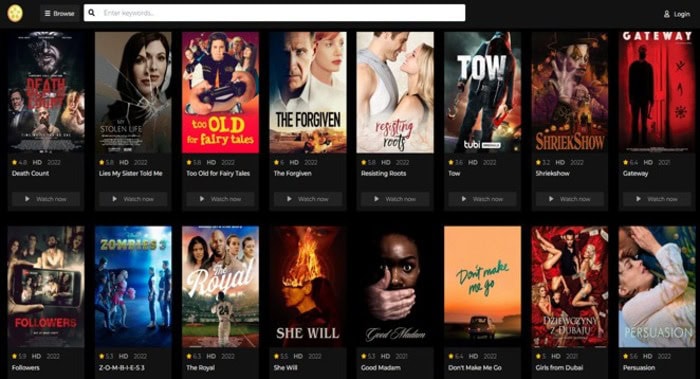
Traditional learning approaches frequently fail to fulfill the demands and expectations of learners in the continually developing sector of education and training. Microlearning, on the other hand, has emerged as a game-changing technique for knowledge acquisition and application.
Microlearning tackles the constraints of traditional approaches by presenting learning information in bite-sized, focused versions. It enables learners to access specific material or abilities efficiently, resulting in more effective learning results. This post will examine the multiple advantages of microlearning and its potential to improve learning efficiency and efficacy.
A bite-sized form makes it particularly successful in satisfying individuals’ distinct learning demands. It delivers concise and concentrated learning information instead of lengthy courses or study materials. This allows learners to interact with the subject in a focused manner, obtaining the required knowledge or skills without being distracted by extraneous distractions. Such an approach guarantees that learners may absorb material at their speed, improving their understanding and recall of essential concepts by cutting complicated topics into digestible bits. To know more, we need to know about its benefits. The following are the eight benefits of microlearning.
1. Time-Efficient Learning
One of the critical advantages is the ability to save time. Traditional learning approaches may entail lengthy courses or comprehensive study materials requiring a considerable time investment. Conversely, microlearning delivers learning information in small, readily consumable chunks, allowing learners to gain knowledge and skills swiftly. It guarantees learners can interact with the data at their pace, fitting learning into their busy schedules by cutting complicated topics into small portions.
2. Increased Retention of Knowledge
Microlearning improves knowledge retention as compared to standard learning methods. Because information is bite-sized, learners may focus on individual concepts or abilities, avoiding cognitive overload. Short, frequent learning sessions have been demonstrated in studies to improve memory consolidation, making it more straightforward for learners to retain and recall material when needed. Learners may strengthen their comprehension and increase retention by repeating essential concepts through focused and recurrent microlearning exercises.
3. Customized Learning Experience
Microlearning enables personalized learning experiences tailored to the needs of each student. Information may be adjusted to different learning preferences and levels of competence. Learners can choose whatever subjects or skills they want to work on. Microlearning can also be provided in various modalities, such as videos, podcasts, infographics, or interactive quizzes, to fit different learning styles. This personalized technique increases student engagement and motivation, improving learning outcomes.
4. Just-in-Time Learning
Microlearning successfully provides just-in-time learning, allowing learners to acquire specific information or abilities when needed swiftly. Instead of going through lengthy courses or seeking information in long resources, microlearning focuses on giving quick knowledge or skills. Employees, for example, can use brief instructional films or information aids to learn about new goods, software upgrades, or troubleshooting skills. This just-in-time strategy reduces the time spent looking for answers and enhances productivity.
5. Low-Cost Training
Microlearning is a more cost-effective alternative to standard training techniques. Creating and delivering complete courses may be time, money, and infrastructure-heavy. The modules, however, are frequently less expensive and faster to build. The shorter duration of the material eliminates the need for considerable planning, development, and delivery resources.
Furthermore, microlearning may be readily updated and adapted to meet the changing needs of the learners, ensuring that the training stays relevant and up to date without incurring significant expenses.
6. Increased Flexibility and Accessibility
Microlearning improves learning accessibility and flexibility. The information may now be accessible anytime and from any location, thanks to the proliferation of digital platforms and mobile devices. Learners may interact with the content over a lunch break, commuting, or leisure time. The program’s adaptability helps learners incorporate learning into their hectic schedules, fostering continual learning and maximizing time utilization.
7. Participatory and Interactive Learning
Video, interactive quizzes, and gamified information are multimedia features in microlearning that make the learning experience more engaging and dynamic. These elements pique learners’ interest, pique their curiosity, and encourage active involvement. The process uses images, audio, and interactive components to create an immersive learning environment that improves comprehension and information retention. Microlearning may also make learning more pleasurable by introducing gamification, pushing learners to engage with the subject actively.
8. Scalability and ease of updating
Microlearning is exceptionally scalable, making it appropriate for individual learners and big organizations. The modular structure of the material enables easy scaling and modification. New or current modules may be added without disturbing the learning framework. Furthermore, upgrades may be swiftly applied to reflect information, technology, or best practices changes. This scalability and flexibility ensure that microlearning can adapt to the changing demands of learners and organizations without substantial interruptions or expenses.
Conclusion
Microlearning has various advantages that boost learning speed and efficacy significantly. Because traditional learning techniques can need lengthy courses or vast study materials, their time efficiency is a significant benefit. Conversely, it presents learning information in bite-sized, concentrated formats that allow learners to gain knowledge and skills swiftly. This method saves time and makes it easier for learners to fit learning into their hectic schedules. Another advantage is that it improves knowledge retention.
Microlearning avoids cognitive overload and increases memory by providing material in brief and focused chunks. Microlearning successfully uses frequent learning sessions, which have been demonstrated to improve information retention. Microlearning improves long-term retention and recall by reinforcing essential concepts through repetition and targeted tasks. In microlearning, learners may maximize their potential and attain their intended learning outcomes.
Furthermore, microlearning enables personalized learning experiences. Learners may customize their learning path to their unique requirements by selecting certain subjects or skills to focus on. Microlearning modules may be tailored to different learning styles and skill levels. This personalized method boosts student engagement, motivation, and overall learning effectiveness. Microlearning fosters a more learner-centric environment, resulting in higher learning results.
Finally, microlearning provides several advantages that boost learning speed and efficacy. Those advantages are time efficiency, improved knowledge retention, personalized learning experiences, just-in-time learning strategy, cost-effectiveness, accessibility, and interactivity. Organizations and people may support continuous learning, boost knowledge acquisition and retention, and adapt to the ever-changing needs of the current learning landscape by using microlearning.


